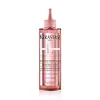What's inside
What's inside
 Key Ingredients
Key Ingredients

 Benefits
Benefits

 Concerns
Concerns

 Ingredients Side-by-side
Ingredients Side-by-side

Alcohol Denat.
AntimicrobialPropylene Glycol
HumectantWater
Skin ConditioningCaprylic/Capric Triglyceride
MaskingMyristyl Alcohol
EmollientCetearyl Alcohol
EmollientCetrimonium Chloride
AntimicrobialBehentrimonium Methosulfate
Parfum
MaskingLactic Acid
BufferingPEG-14 Dimethicone
Skin ConditioningPPG-10 Methyl Glucose Ether
Skin ConditioningDi-C12-13 Alkyl Malate
EmollientTocopherol
AntioxidantTartaric Acid
BufferingLinalool
PerfumingLimonene
PerfumingGeraniol
PerfumingCentella Asiatica Extract
CleansingPentaerythrityl Tetra-Di-T-Butyl Hydroxyhydrocinnamate
AntioxidantCeramide AP
Skin ConditioningAlcohol Denat., Propylene Glycol, Water, Caprylic/Capric Triglyceride, Myristyl Alcohol, Cetearyl Alcohol, Cetrimonium Chloride, Behentrimonium Methosulfate, Parfum, Lactic Acid, PEG-14 Dimethicone, PPG-10 Methyl Glucose Ether, Di-C12-13 Alkyl Malate, Tocopherol, Tartaric Acid, Linalool, Limonene, Geraniol, Centella Asiatica Extract, Pentaerythrityl Tetra-Di-T-Butyl Hydroxyhydrocinnamate, Ceramide AP
Water
Skin ConditioningSodium C14-16 Olefin Sulfonate
CleansingCocamide Mea
EmulsifyingGlycerin
HumectantCocamidopropyl Betaine
CleansingGlycol Distearate
EmollientSodium Lauroyl Sarcosinate
CleansingParfum
MaskingHexylene Glycol
EmulsifyingCI 17200
Cosmetic ColorantCI 19140
Cosmetic ColorantCoco-Betaine
CleansingSodium Hydroxide
BufferingSodium Chloride
MaskingSodium Benzoate
MaskingHydroxypropyl Guar Hydroxypropyltrimonium Chloride
Hydroxycitronellal
PerfumingPEG-55 Propylene Glycol Oleate
Salicylic Acid
MaskingPolyquaternium-7
Limonene
PerfumingBenzoic Acid
MaskingLinalool
PerfumingBenzyl Benzoate
AntimicrobialPropylene Glycol
HumectantCarbomer
Emulsion StabilisingCitric Acid
BufferingHexyl Cinnamal
PerfumingGlycolic Acid
BufferingWater, Sodium C14-16 Olefin Sulfonate, Cocamide Mea, Glycerin, Cocamidopropyl Betaine, Glycol Distearate, Sodium Lauroyl Sarcosinate, Parfum, Hexylene Glycol, CI 17200, CI 19140, Coco-Betaine, Sodium Hydroxide, Sodium Chloride, Sodium Benzoate, Hydroxypropyl Guar Hydroxypropyltrimonium Chloride, Hydroxycitronellal, PEG-55 Propylene Glycol Oleate, Salicylic Acid, Polyquaternium-7, Limonene, Benzoic Acid, Linalool, Benzyl Benzoate, Propylene Glycol, Carbomer, Citric Acid, Hexyl Cinnamal, Glycolic Acid
Ingredients Explained
These ingredients are found in both products.
Ingredients higher up in an ingredient list are typically present in a larger amount.
Limonene is a fragrance that adds scent and taste to a formulation.
It's found in the peel oil of citrus fruits and other plants such as lavender and eucalyptus. The scent of limonene is generally described as "sweet citrus".
Limonene acts as an antioxidant, meaning it helps neutralize free radicals.
When exposed to air, oxidized limonene may sensitize the skin. Because of this, limonene is often avoided by people with sensitive skin.
The term 'fragrance' is not regulated in many countries. In many cases, it is up to the brand to define this term. For instance, many brands choose to label themselves as "fragrance-free" because they are not using synthetic fragrances. However, their products may still contain ingredients such as essential oils that are considered a fragrance.
Learn more about LimoneneLinalool is a fragrance and helps add scent to products. It's derived from common plants such as cinnamon, mint, citrus, and lavender.
Like Limonene, this ingredient oxidizes when exposed to air. Oxidized linalool can cause allergies and skin sensitivity.
This ingredient has a scent that is floral, spicy tropical, and citrus-like.
Learn more about LinaloolParfum is a catch-all term for an ingredient or more that is used to give a scent to products.
Also called "fragrance", this ingredient can be a blend of hundreds of chemicals or plant oils. This means every product with "fragrance" or "parfum" in the ingredients list is a different mixture.
For instance, Habanolide is a proprietary trade name for a specific aroma chemical. When used as a fragrance ingredient in cosmetics, most aroma chemicals fall under the broad labeling category of “FRAGRANCE” or “PARFUM” according to EU and US regulations.
The term 'parfum' or 'fragrance' is not regulated in many countries. In many cases, it is up to the brand to define this term.
For instance, many brands choose to label themselves as "fragrance-free" because they are not using synthetic fragrances. However, their products may still contain ingredients such as essential oils that are considered a fragrance by INCI standards.
One example is Calendula flower extract. Calendula is an essential oil that still imparts a scent or 'fragrance'.
Depending on the blend, the ingredients in the mixture can cause allergies and sensitivities on the skin. Some ingredients that are known EU allergens include linalool and citronellol.
Parfum can also be used to mask or cover an unpleasant scent.
The bottom line is: not all fragrances/parfum/ingredients are created equally. If you are worried about fragrances, we recommend taking a closer look at an ingredient. And of course, we always recommend speaking with a professional.
Learn more about ParfumPropylene Glycol is an odorless, colorless liquid. As a humectant, it helps skin retain moisture. It also aids in delivering active ingredients.
Another role of this ingredient is preventing a product from melting or freezing. Propylene glycol also adds antimicrobrial properties to a product, elongating product lifespan.
This ingredient is considered an organic alcohol and commonly added into both cosmetics and foods.
Those with sensitive skin or conditions may develop a rash when using this ingredient.
Learn more about Propylene GlycolWater. It's the most common cosmetic ingredient of all. You'll usually see it at the top of ingredient lists, meaning that it makes up the largest part of the product.
So why is it so popular? Water most often acts as a solvent - this means that it helps dissolve other ingredients into the formulation.
You'll also recognize water as that liquid we all need to stay alive. If you see this, drink a glass of water. Stay hydrated!
Learn more about Water